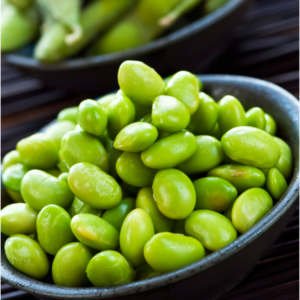The challenge for Vegetarians is to consume a wide variety of plant protein sources, in order to obtain all 9 Essential Amino Acids. These amino acids are termed ‘essential’ because they cannot be formed within the body from other sources, and so must be consumed from a variety of protein foods in the diet.
| Histidine | Phenylalanine | Lysine |
| Isoleucine | Threonine | Methionine |
| Leucine | Tryptophan | Valine |

Top food sources include:
Grains and Pseudograins:
Buckwheat – contains all essential amino acids, especially lysine, and is gluten-free. Also a good source of B vitamins and rutin. Cooked buckwheat can be can be served as a hot breakfast cereal or added to soups and stews. You can also buy buckwheat in flour form and blend it with other flours to make healthier breads, muffins, and pancakes.
Quinoa – is a pseudograin and is gluten-free. It is a source of all the essential amino acids, especially lysine. It is best when cooked in broth and served alongside vegetables, or topped on a salad.
Rice – is an incomplete source of amino acids, and so is well paired with beans. White rice has the husk, bran, and germ removed, which lowers its nutrients. Brown rice only has the husk removed, so it retains fiber and germ, which contain vital nutrients. Brown rice is a decent source of Leucine, Phenylalanine and Valine, but relatively low in other essentials.
Seitan – is a dense, chewy vegan protein made from wheat gluten. Seitan contains 8 of the 9 essential amino acids, only lacking in lysine. Therefore, it works well to combine with foods high in lysine, such as lentils, tofu, and almonds.
Ezekial bread (sprouted wheat, barley, beans, lentils, millet and spelt) – Sprouting reduces the gluten content, breaks down enzyme inhibitors, and makes the bread easier to digest. Ezekial bread contains all 9 essential amino acids.
Beans and Legumes:
Beans – contain particularly high concentrations of tryptophan, isoleucine and phenylalanine, but are low in methionine. They provide a good balance of amino acids when consumed with rice.
Chickpeas – contain 8 of the 9 essential amino acids, only missing histidine. Chickpeas can be paired with foods naturally high in histidine, such as bananas and grapes, and to a lesser extent in root vegetables.
Lentils (red, brown) – are rich in isoleucine and lysine, but are usually low in methionine and cysteine. However, if lentils are sprouted before they are cooked, then all essential amino acids are available. Alternatively, pair lentils with whole grains such as rice or wheat to improve the amino acid profile.
Pea protein – contains all 9 essential amino acids, although is lower in content in tryptophan and methionine.
Nuts and Seeds:
Nut and Seed butters (peanut, almond, cashew, sunflower seed) – are high in 7 of the 9 essential amino acids, with lower amounts of methionine and phenylalanine. Therefore, nuts and seeds can be paired well with grains and soy.
Hemp seeds – are considered to be a complete protein source, containing all the essential amino acids, particularly methionine and cysteine. They are also a rich source of healthy fats like Omega 6, Omega 3 and GLA.
Chia seeds – contain all 9 essential amino acids, and are especially high in Omega 3 fatty acids. Chia seeds should be soaked prior to consuming, because they can absorb a substantial amount of water from within the gut.
Other:
Spirulina (algae) – is a type of blue-green algae that grows naturally in oceans and salty lakes in subtropical climates. Spirulina contains all 9 essential amino acids, although is not a particularly good source of methionine or cysteine.
Protein Supplements:
If it is too challenging to consume a variety of these foods regularly, we recommend taking either BodyHealth Perfect Amino, Standard Process Protefood, or Biotics AminoSport supplements. Dr. Bacon can help determine which product is best for you!


